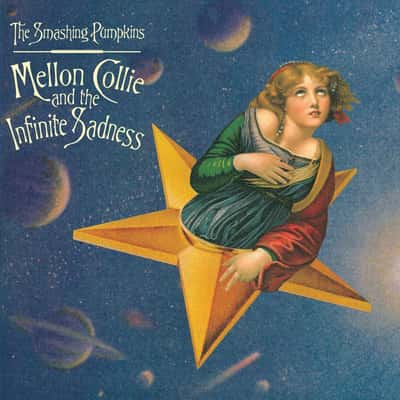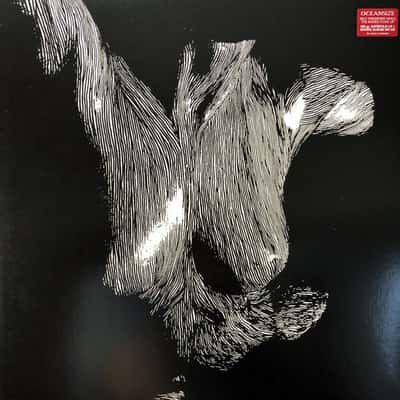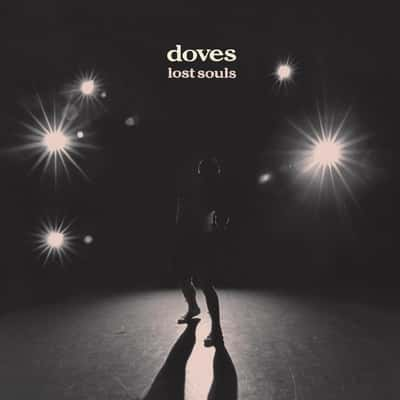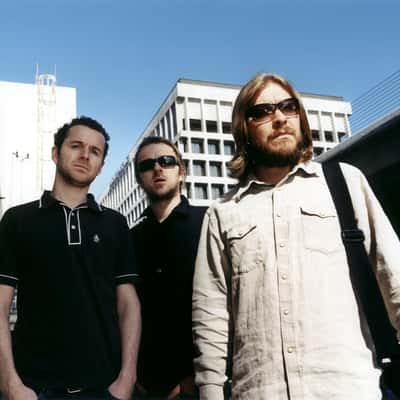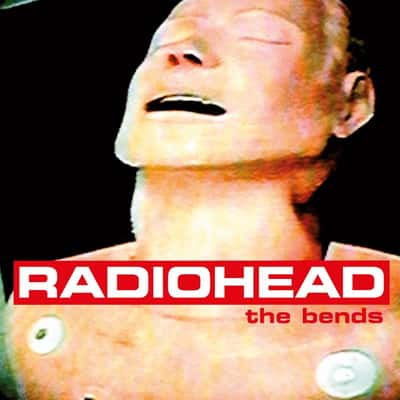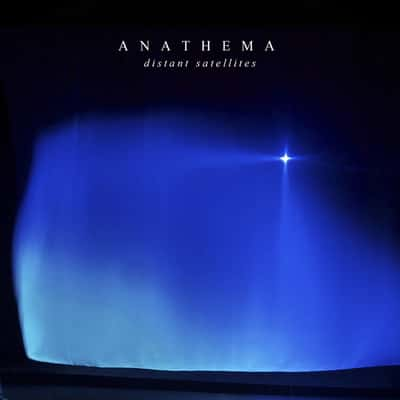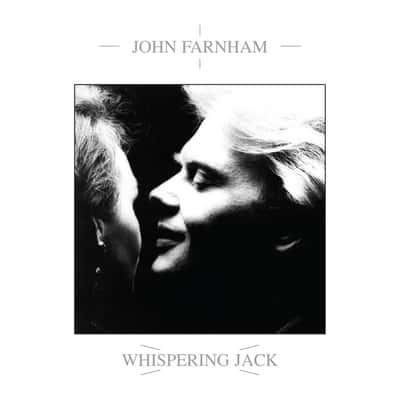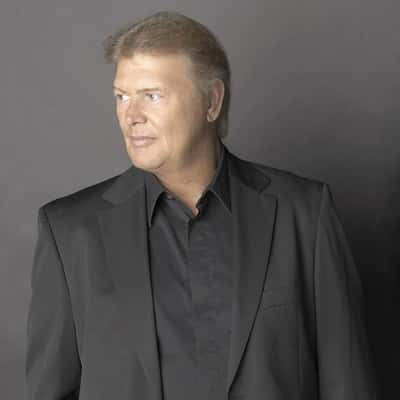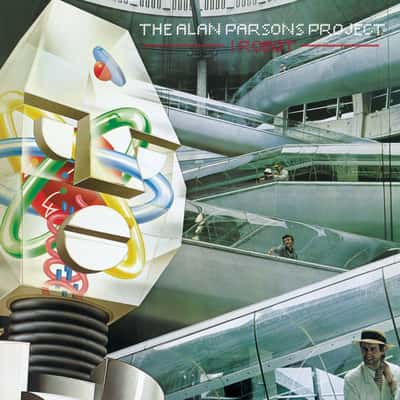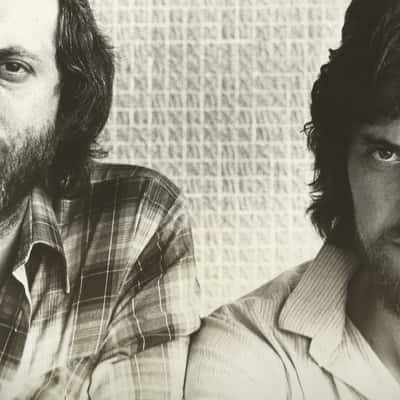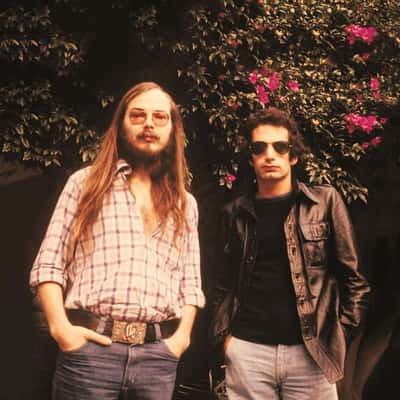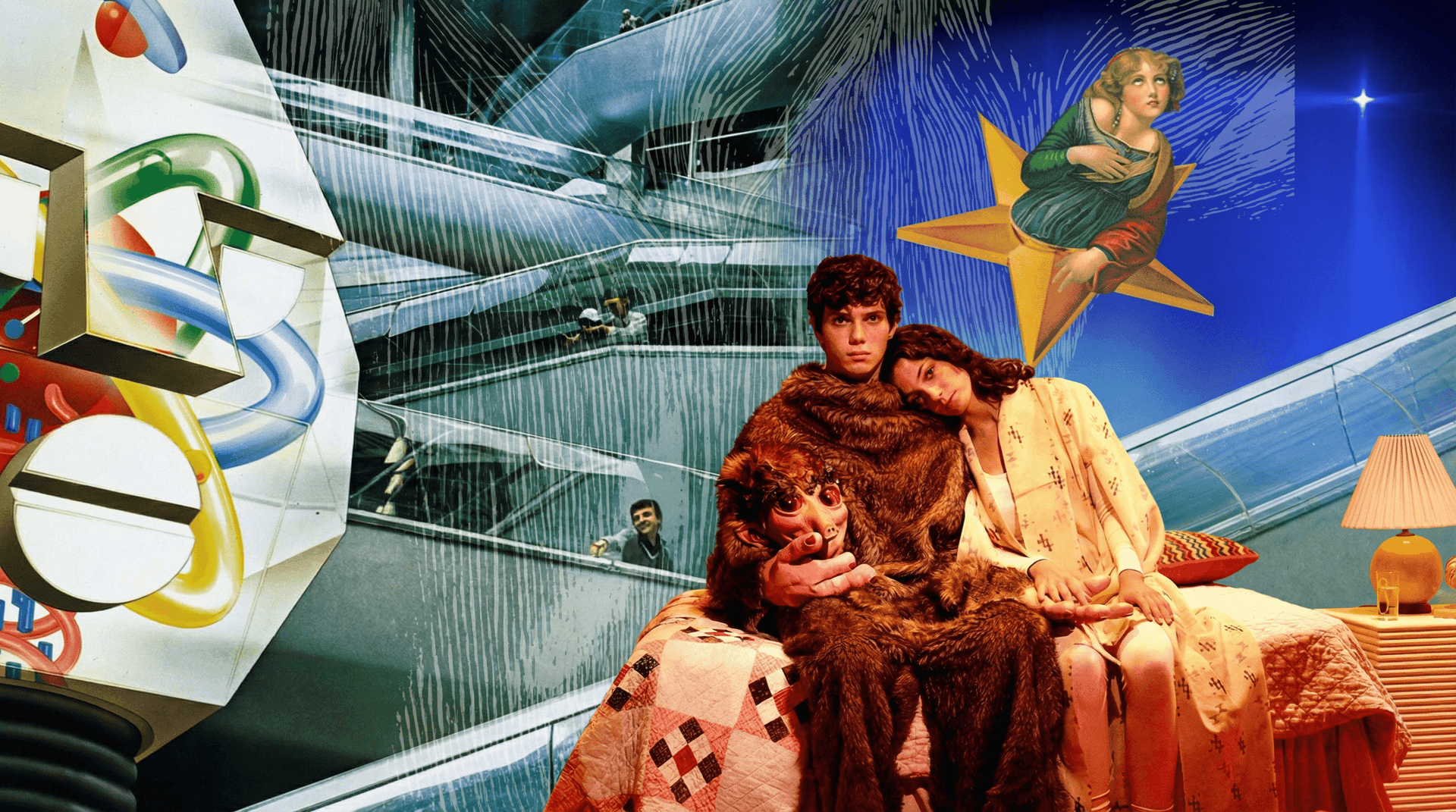
A Sonic Tapestry: Weaving Dreamscapes from Mellon Collie to I Robot
Mellon Collie and the Infinite Sadness 🌌
A Cosmic Odyssey: The Albums Inception 🚀
As the sun set on the grunge-fueled 90s, a new celestial body entered the rock universe: Mellon Collie and the Infinite Sadness. Released on October 24, 1995, The Smashing Pumpkins’ ambitious double album enveloped listeners in its expansive soundscape, blending elements of alternative rock, heavy metal, and orchestral arrangement. Culled from the artistic fervor following Siamese Dream, this opus was conceptualized as a rock opera for the kids, a culmination of Billy Corgans introspections and dreams, drenched in the melancholy that defined an era. Corgan himself described the albums thematic duality as “the juxtaposition of hope and despair,” a sentiment that resonates throughout its sprawling 28 tracks.
The Little Secrets Behind the Tracks 🤫
One of the lesser-known gems lies in the production process. To achieve the sprawling sound of Mellon Collie, the band worked with renowned producer Flood, who had previously collaborated with U2 and Nine Inch Nails. Their sessions often took place at the famed RCA Studio A in Nashville, a space known for its rich acoustic qualities. During the recording, local Nashville musicians contributed unique elements; for instance, a string section was gently layered onto “Tonight, Tonight,” lending orchestral heft to the track. The magical sonic landscape was then polished through meticulous mixing, which utilized technologically innovative techniques. Corgan took particular delight in minimizing the predictability of rock formulas, wielding studio manipulation like an artist with a brush, showcasing a keen sense of innovation.
A Cultural Mosaic: Reflections of the 90s 🎨
Mellon Collie wasnt just a musical achievement; it was a cultural milestone that encapsulated the angst and harmony of its time. As the world was grappling with issues from Y2K fears to economic uncertainty, songs like “1979” encapsulated the bittersweet nostalgia associated with youth. The music video, featuring scenes of suburban youth cruising through sun-drenched streets, became emblematic of Gen X disillusionment. Fans felt a deep connection as they too coped with the weight of growing up in an unstable world. Beyond its immediate impact, Mellon Collie set the stage for the final wave of alternative bands to rise to prominence, inspiring acts like My Chemical Romance and Muse, who would carry the torch into the 21st century.
The Aesthetic and Visual Brilliance 🎭
The albums aesthetic, crafted by Corgan and art director John Craig, is as iconic as the music itself. The cover art, a dreamlike amalgam of colors and celestial imagery, resonates with the thematic duality of the album. Much like the music, it oscillated between the ethereal and the unsettling. The bold and grandiose packaging was designed to entice listeners into an experience, transcending the mere act of playing music. Even the title, an absurdly whimsical yet profoundly somber phrase, became a conversation starter, reflecting the complex blend of emotions embedded within the albums tracks.
Reverberations Through Time: Legacy and Influence ⏳
As we look back thirty years since its release, Mellon Collie and the Infinite Sadness has solidified its standing as one of rocks seminal records. It has sold over six million copies in the U.S. alone and has garnered seven Grammy nominations. Its influence can still be felt in todays musical landscape—bands continue to draw inspiration from its stylistic breadth, while Corgan’s vision resonates within the alternative rock of today. The mere act of scouring the emotions of youth, heartbreak, and reflection remains timeless—a testament to the albums lasting power.
In retrospect, what makes Mellon Collie and the Infinite Sadness particularly unique is not just the audacity of its scope but the intimacy of its exploration. Each song feels like a whispered wish carried by the wind—a desire to connect, understand, and ultimately transcend the human experience. It allows listeners a moment of introspection as they navigate through the infinite sadness of the universe with the echoes of the Pumpkins lighting the way. 🎶
Hurry Up, Were Dreaming 🌌
A Sonic Time Capsule 🕰️
Released on October 18, 2011, Hurry Up, Were Dreaming served as a vibrant signal flares of nostalgia shot straight into the cosmic ether of the millennium. M83, the brainchild of French musician Anthony Gonzalez, created an album that resonated profoundly with both the exuberance and fragility of youth. Each track is a sweeping journey through the dreamscapes of adolescence, embodying moments of enlightenment, longing, and wistfulness. In an era defined by digital connections, this album captures that fleeting innocence like a perfect snapshot.
Dreaming in Technicolor 🎨
What sets this album apart, hidden beneath layers of ethereal synths and emotive guitar lines, is how Gonzalez masterfully whisked together a myriad of influences. Drawing inspiration from 80s synth-pop and shoegaze, he constructed a palette rich in sonic texture. Tracks like “Midnight City” transcended their genre, weaving a tapestry of vibrant sounds and cinematic echoes that seemed to speak directly to each listeners soul. The use of lush instrumental layers invited fans to create their own interpretations, allowing them to inhabit this dream world, complete with its shimmering highs and heart-wrenching lows.
The Collaborative Spirit 🤝
An often overlooked aspect of Hurry Up, Were Dreaming is the extensive collaboration that accompanied its creation. Gonzalez enlisted the help of various musicians and visual artists, underscoring a commitment to a collaborative vision that blurred the distinctions between sound and artistry. Notably, his sister, Laetitia Gonzalez, provided vocal harmonies that punctuated several tracks, adding a touch of haunting beauty, while the artwork and music videos further encapsulated the ethereal feel of the record. Together, they crafted an immersive experience that made listeners feel less like passive consumers and more like partakers in a vibrant, shared dream.
A Departure into Fantasy 🌈
The album isn’t just an auditory experience but a textural odyssey, sampling and drawing on cultural touchstones. Its lead single, “Midnight City,” with its iconic saxophone solo, became a cultural phenomenon. The inclusion of the saxophone—a seemingly anachronistic choice for a modern synth-based album—served as a bridge to a bygone era, eliciting feelings of nostalgia that tethered the music to our collective memory. This brave sonic decision exemplified a refreshing departure from typical mainstream musical narratives, solidifying M83s place as adventurous pioneers of the genre.
Embracing Cinematic Scope 🎬
Moreover, Hurry Up, Were Dreaming ventured into audiovisual territory, with Gonzalez utilizing his background in film scoring. The album flows like a movie soundtrack, where each track adds a layer to the overarching narrative of childhood dreams and bittersweet awakenings. Songs like “Reunion” and “Outro” evoke cinematic visuals, solidifying Gonzalez as a storyteller crafting intricate soundscapes that resonate emotionally. His ability to create a film without visuals, inviting listeners to paint their own mental images, set M83 apart from their contemporaries.
Echoes of Influence 📻
The impact of Hurry Up, Were Dreaming can be traced in the works of emerging artists, who cite Gonzalezs ability to blend genres and evoke sentiment through dream/pop aesthetics. Influences can be felt in bands like CHVRCHES and artists such as The 1975, who skillfully incorporate ethereal soundscapes with pop sensibilities. The dream pop revival that followed saw a rise in acts experimenting with lush production, a clear testament to the albums enduring legacy.
Legacy in a Digital Age 📱
In a world where attention spans are fleeting, this double album reminds us of the value of fully immersing ourselves in something profound. Ten years later, as we continue to navigate the complexities of digital existence, Hurry Up, Were Dreaming stands as both a time capsule and a clarion call. It encourages us to linger, to embrace fantasy, and to dream vividly amid the chaos of reality. While the melodic echoes of “Wait” and “Steve McQueen” may fade into the background, the album remains a lush, vitamin-rich diet for the soul, inviting listeners to take the plunge into their own cosmic reveries.
As we celebrate its anniversary, let us not just listen, but lose ourselves again in those boundless soundscapes that remind us, above all, to embrace our dreams, however fleeting they may be. 🌠
Self Preserved While The Bodies Float Up 🌊
The Dawn of a New Sound 🌅
When Oceansize released Self Preserved While The Bodies Float Up in 2007, they didnt just drop an album; they reinvented their existence. This was a band at a crossroads, bravely venturing into uncharted territories while retaining their signature experimental flair. With production helmed by Chris Sheldon, known for his work with heavy-hitters like the Foo Fighters and Pixies, the album becomes a magnificent tapestry woven from threads of post-rock, progressive metal, and a hint of alternative rock. 🧵
The opening trio of tracks signals a radical departure from their previous work—songs that grant listeners permission to metamorphose alongside the band. Take “Part Cardiac”—a visceral explosion that fuses crushing riffs with an almost playful yet sinister rhythm. It acts as a siren call to anyone who thought they knew what Oceansize was about; listen closer, and youll find a band on the brink of evolution.
Personal Plights and Poetic Heights ✍️
What makes this album particularly poignant is the raw honesty that permeates its lyrics. Frontman Mike Vennart channels personal strife and existential musings into the fabric of the songs. “SuperImposter,” with its dark allure, encapsulates feelings of inadequacy while simultaneously embracing the messiness of identity. Vennart’s vulnerability offers an inviting contrast to the complex instrumental sections, creating an intricate dance between brutal honesty and beautiful chaos. 🎭
A Daring Production Journey 🎚️
Recording at Rockfield Studios in Wales—a location steeped in rock history—Oceansize took advantage of its vast soundscapes to capture the albums depth. The studio had previously played host to legends like Queen and Black Sabbath. The contrast of their heavy, historic sound with Oceansizes airy, sprawling compositions creates a fascinating auditory dichotomy. 🎶
Sheldon’s production nuances are evident, as he expertly blends sharp rhythms with the ethereal. Employing experimental techniques, he encapsulated the bands essence in a way that felt both expansive and intimate. For a band like Oceansize, whose sonic architecture often carries grandiosity, achieving this balance was a high wire act, but one they walked with remarkable finesse.
Influence and Legacy 🌟
Fast forward to today, Self Preserved While The Bodies Float Up stands as a beacon on the post-rock spectrum, influencing a legion of newer acts seeking to push their musical boundaries. Bands like The Dear Hunter and Cult of Luna have cited Oceansize’s ability to intertwine complex narratives with lush instrumentation as a catalyst for their own sonic explorations. Many claim that the emotional weight woven into each track offers new artists a roadmap for emotional honesty within a heavier framework.
Moreover, fans still chant the albums namesake at gigs, turning “Self Preserved” into a rallying cry. Its themes resonate through all phases of life: from the poignant acceptance of one’s imperfections to the thrilling acknowledgment of self in chaos, the record serves as both a comfort and a challenge.
Concluding Thoughts 🌈
Self Preserved While The Bodies Float Up is more than an auditory experience; it’s a journey through the human psyche, filled with shadows and light. It ensures that we all can relate to feeling lost while defiantly swimming against the currents of expectation. As we dive into the untamed waters of artistry, this album serves as a reminder to embrace the turbulence of self-discovery, beautifully captured within the sonic landscapes of Oceansize.
In the vast ocean of musical offerings, Self Preserved While The Bodies Float Up is a profound wave that continually resurfaces, redefining what it means to create art with sincerity and spirit—making sure we are all beautifully self-preserved while the bodies float up around us. 🌊✨
Love Kraft 🎶
The Cosmic Blend of Love & Tech 🌌
In the dimly lit studios of Wales, the Super Furry Animals (SFA) were busy crafting their seventh album, Love Kraft, a title that can spark a debate almost as vibrant as the music it contains. Released on 22 August 2005, this record marked a significant point in SFAs kaleidoscopic career. But what set Love Kraft apart was not merely its eclectic mix of genres but rather its intentional homage to two seemingly disparate influences: the peace-loving vibes of the band Love and the hypnotic, synthetic sounds of Kraftwerk. At the intersection of these influences, SFA created a soundscape that was both modern and timeless, echoing the past while looking to the future. ✨
A Journey Into a Sonic Universe 🚀
Love Kraft opens with “Zoom,” a track that feels like taking off on a spaceship headed towards an interstellar party. The lush instrumentation, layered harmonies, and unmistakably Welsh flair create a buoyant sound that invites listeners to leave their earthly troubles behind. SFAs celebration of the space age aligns perfectly with the burgeoning cultural dialogue around technologys role in our lives during the mid-2000s. As the world grew more consumed by digital presence, this album became an ode to both our yearning for connection and the paradoxical isolation technology could bring.
Breaching the Language Barrier 🌍
In a bold artistic move, SFA continued their tradition of incorporating Welsh language songs into Love Kraft. The track “Cyno,” for instance, embraces the bands roots while contributing to a growing global recognition of Welsh culture in pop music. This bilingual approach resonated not only with native speakers but with an audience eager to engage with music that transcended geographic boundaries. The band’s commitment to maintaining their cultural identity in a globalized world highlights a unique vibrant contrast to the English-dominant narratives of most contemporary rock bands.
The Hidden Depths of Production 🎛️
While listeners may bask in the album’s lush melodies, they might not realize the intricate layers of production that went into Love Kraft. The band utilized an array of vintage instruments, electronic textures, and even field recordings from everyday sounds, creating an audio tapestry that feels at once organic and otherworldly. Combined with the adventurous spirits of band members Gruff Rhys, Cian Ciaran, and their talented cohort, the sessions were exploratory and improvisational, often stretching well into the night. The intention was clear: to craft an experience as immersive as a personal journey, inviting fans to step inside an expansive universe of sound. 🌌
Reception and Legacy: A Cult Classic Emerges 🌟
As Love Kraft resonated with fans upon its release, it garnered critical acclaim and solidified Super Furry Animals status as genre-benders. Yet its journey didn’t stop there. Over the years, it has gained a cult following, often cited by aspiring indie artists as a beacon of creativity and innovation. The album stands as a milestone in the indie rock landscape of the 2000s, illustrating how genre boundaries can blur when creativity takes the helm. Artists such as MGMT and The Flaming Lips have cited SFA’s eclectic approach as inspiration, harnessing their fusion of sounds and style to carve new paths in their own music. 🎸
A Love-Powered Reflection on Today ❤️
Revisiting Love Kraft in today’s culture brings an intriguing narrative to light. As we navigate a world increasingly dominated by technology, the album’s themes of connection and introspection resonate profoundly. The fusion of warm melodies paired with sharp electronic elements mirrors our own lives—often chaotic yet filled with moments of authentic connection. Just like the SFA in Love Kraft, we find ourselves at the crossroads of love and technology, searching for meaning in a tapestry of sound and experience.
In a world hungry for creativity and authenticity, Love Kraft serves as a timely reminder: music has the power to transcend boundaries, celebrating both our collective experience and our unique voices. As Super Furry Animals’ ethereal tunes spin through our minds and hearts, let us cherish the intertwined threads of love and sound that bind us all together. 🎶
Lost Souls 🌌
The Birth of an Alternative Vision 🎨
When Doves released Lost Souls in April 2000, it arrived like a breath of fresh air amidst a landscape still recovering from the vibrant wreckage of Britpop. This debut album marked a significant evolution for the band, transitioning from the electronic pulse of their earlier incarnation as Sub Sub to a more expansive alternative rock sound. The change was not merely a stylistic choice; it was a rebirth born from upheaval. Following the disbanding of Sub Sub after a disastrous studio fire that destroyed their equipment, Doves found themselves wandering the creative wilderness, seeking new sonic paths to tread.
The band’s story adds to the albums lore. After the fire, the members—Jimi Goodwin, Jez Williams, and Andy Williams—transformed their collective grief into a haunting yet hopeful soundscape. This shift is palpable in tracks like “The Cedar Room” and “Pounding,” where reflective lyrics meet rich, textured melodies. Each song feels like a chapter in a weathered diary, grappling with loss but also celebrating rebirth. Its this duality that gives Lost Souls its emotional weight, a sentiment that resonates deeply even today.
The Sound of Shadows and Light 🌤️🌑
One of the most fascinating aspects of Lost Souls is how it unabashedly plays with contrast. The album oscillates between light and dark—echoing a journey through despair towards renewal. The lead single, “The Man Who Told Everything,” captures this struggle with its delicately layered instrumentation and soaring melodies that flirt with euphoria. In contrast, “Sea Song” is almost mournful, highlighting the band’s ability to entwine melancholy with beauty.
The ethereal quality of the album was further enhanced by the bands decision to record in a remote farmhouse in the Welsh countryside. This choice not only isolated them from the distractions of urban life but also influenced the ambient sounds permeating their music—like rain pattering on the windows or the wind whistling through the trees. The rugged, natural environment became a character itself, enriching the themes of longing and contemplation that underpin the album.
A Sonic Legacy 🌍
Upon its release, Lost Souls was met with enthusiastic reception, often hailed as one of the best debut albums since Oasis Definitely Maybe. Critics praised its lush soundscapes and intricate arrangements, and it quickly cemented Doves place in the pantheon of British indie rock. Yet, its impact extends well beyond its initial acclaim. In the two decades since, the album has influenced countless artists across genres, from the soaring choruses of Coldplay to the introspective sound of modern indie acts like The War on Drugs. Doves ability to marry expansive rock with introspective lyrics paved the way for artists willing to explore deeper emotional narratives set against grand melodies.
Echoes in Time 🌙⏳
As we listen to Lost Souls today, its resonance remains profound. The themes of searching for meaning amid chaos are timeless, especially in an era defined by digital noise and constant change. Songs like “Catch the Sun” reflect a yearning for connection—an anthem for anyone navigating the uncertainties of life, an echo of shared human experience. The profound sense of vulnerability expressed throughout the album serves as a reminder that art can be a powerful conduit for catharsis and healing.
Moreover, Doves’ triumph lies in their ability to craft music that doesn’t merely reflect the present but also anticipates future possibilities. Their sound, unshackled by genre confines, has allowed them to remain relevant even in a rapidly evolving musical landscape. As we celebrate the legacy of Lost Souls, we recognize its landscapes not just as a reflection of the time it was created but as a continual source of inspiration for all who dare to embark on their own journeys of self-discovery through music.
In the end, Doves invites us to embrace the lost souls within ourselves, turning shadows into songs that uplift and unite—a testament to the enduring power of music. 🎶
The Bends 🎸
A Sonic Leap Into the Abyss 🌊
When Radiohead released The Bends in 1995, it marked not just a maturation of the band but a seismic shift in the alternative rock landscape. Emerging from the shadows of the one-hit-wonder “Creep,” Radiohead began to explore deeper emotional currents and lyrical complexities that were once rare in mainstream music. The album’s audacious sound would set new benchmarks for both alternative and mainstream rock, a testament to their ability to weave intricate narratives and rich textures.
The Birth of The Sound: From Creep to Depths of Emotion 💔
The transition from their debut album, Pablo Honey, to The Bends was both organic and tumultuous. Thom Yorke and Jonny Greenwood were already tired of the relentless touring and the incessant performance of “Creep.” They yearned for something more profound, more intimate. Their decision to perform as a stripped-down duo at New York’s Mercury Lounge in 1994 was a pivotal moment. This acoustic showcase, where Yorke bared his soul alongside Greenwood’s textured guitar lines, hinted at the future contours of The Bends. This raw presentation highlighted their willingness to evolve and hinted at the emotional depth that would characterize their sophomore effort.
Recording: A Challenging Journey ⛪️
Recording sessions for The Bends were fraught with challenges, reminiscent of the emotional turbulence depicted in the songs themselves. The band utilized the Abbey Road studios in London—not just a legendary location, but a space that allowed them to explore technological innovations in recording. Producer Nigel Godrich, an unassuming hero in Radiohead’s narrative, played a crucial role. His attention to detail and approach to layering sound created a sonic atmosphere that was both haunting and expansive. From the thick, intricate layers of “Fake Plastic Trees” to the driving energy of “My Iron Lung,” listeners found themselves navigating through a beautifully crafted maze of sound.
Lyrical Depths: An Exploration of Modern Alienation 🌌
Lyrically, The Bends is a raw examination of mental health, identity, and societal disconnection—an exploration that resonated deeply with the grunge and post-punk movements of the early ’90s. Songs like “Street Spirit (Fade Out)” juxtaposed seemingly mundane experiences with existential despair, cementing the band’s reputation for poignancy. This theme was especially relevant amid the growing discontent and anxiety of Generation X, offering listeners a voice and a validation for their feelings of inadequacy and alienation.
Unsung Heroes: Influencing a Generation 🎤
Despite being only the band’s second album, The Bends profoundly influenced a wave of artists who followed. Bands such as Coldplay and Muse have cited Radiohead’s intricate songwriting and atmospheric sounds as pivotal in shaping their own music. The lush arrangements and inventive production techniques found on The Bends opened new pathways for artists exploring depth beyond commercial success. Notably, the title track laid the groundwork for later genre-bending developments, mixing rock, atmospherics, and electronic elements—a formula that would blossom further in the subsequent OK Computer.
The Legacy: A Cornerstone of Alternative Rock 🔮
Upon its release, critical reception was overwhelmingly positive, yet the album’s success did not explode instantly as it would with its successor. Initially overshadowed by contemporaneous hits, The Bends gradually built its audience, emerging as a classic that epitomizes ‘90s rock. It received a Bose award for Best British Album at the Brit Awards in 1996, a nod to its cultural significance. The legacy of The Bends is further solidified by its enduring relevance; it continues to resonate with new generations who seek catharsis in its sound.
A Cultural Touchstone 🎶
Today, The Bends stands not merely as an album but as a cultural touchstone—illustrating how vulnerability can create anthems of shared human experience. As listeners revisit its haunting melodies and reflective lyrics, they are wrapped in the arms of a band that dared to dive into the depths of what it means to feel and to connect in an age of overwhelming disconnection.
In retrospect, The Bends wasn’t just a leap for Radiohead; it was a profound subterranean journey that broke new ground, reshaped the music scene, and offered poetic clarity in a tumultuous world—one note at a time.
Distant Satellites 🌌
Anathema’s “Distant Satellites,” released in 2014, finds its place not just as another release in the band’s impressive discography, but as a pivotal exploration of emotion set against a backdrop of celestial themes. This album, steeped in both melancholy and hope, blends the ethereal with the palpable—a signature move by a band that has evolved significantly from their early doom metal roots.
A Cosmic Shift in Sound 🌠
By the time Anathema reached Distant Satellites, they had long since shed their initial sonic clothing. The album marks a distinct evolution from the doom-laden atmospheres of their early works like Judgement (1999) and A Fine Day to Exit (2001). Instead, it embraces a progressive rock sensibility that is both expansive and intimate, framing themes of love, loss, and existential reflection. This sonic change resonates through tracks like The Lost Song, which gradually builds layers of instrumentation that mirror the vastness of its lyrical content.
Richard M. Grant, the bands guitarist, has expressed how “Distant Satellites” was about capturing feelings of isolation and connection simultaneously. The album’s title itself evokes a sense of separation—each satellite lingering at a distance yet inherently linked. It’s a compelling metaphor for modern relationships, where connection is myriad yet often fragmented—a theme that seems increasingly relevant in the digital age.
The Influence of Surrounding Artistry 🎨
Anathemas journey with “Distant Satellites” illustrates their openness to cross-genre techniques. In an era where heavy metal was often rigidly defined, Anathema blended ambient soundscapes with progressive rock’s intricate structures and emotional breadth. This melding has left an indelible mark on contemporary alternative artists—bands like Alcest and Leprous owe their complex soundscapes to this kind of genre-defying approach. “Distant Satellites” served as a beacon for musicians seeking to marry heavy instrumentation with reflective lyrical narratives, effectively broadening what heavy music could encompass.
The Recording Space: A Serendipitous Setting 🎧
The recording of Distant Satellites took place at the infamous The Canal House in England, where the ambience of the facility played a critical role in the albums ethereal sound. Nestled in an isolated area, the location provided a unique resonance, allowing Anathema to refine their signature atmospheric elements. The isolation helped cultivate a creative space free from distraction, and in that solitude, tracks like Ariel were born—intimate and sprawling in equal measure. The band has noted how the atmosphere of the studio translated into a more organic feel in their music, enhancing the emotional delivery of the album.
Reception: Between Hearts and Stars 💔✨
Upon its release, “Distant Satellites” received a warm reception from critics and established a dedicated fan base. Fans resonated with the albums exploration of emotional terrain, highlighted in tracks such as Anathema” and “Distant Satellites,” both of which create a nuanced tapestry of sound showcasing the bands growth. However, some long-time listeners noted a departure from the heavier edge of their previous works—something that Anathema members anticipated would ignite debate among their fans.
Yet, the more mellow and introspective qualities of this album have drawn in a new audience, illustrating the band’s ability to adapt and evolve while still maintaining their core essence. It’s a testament to the notion that music, like life, is a journey—one that parallels the themes of seeking and understanding found throughout the album.
Legacy of “Distant Satellites” 🚀
Distant Satellites stands as more than just an album; it is an exploration of the human condition set against the vast backdrop of the universe. Anathemas ability to encapsulate intense emotions while pulling audiences into their soundscapes renders Distant Satellites not only a significant chapter in the bands biography but a landmark in contemporary progressive music.
As we continue to traverse through the cosmos of our own lives, Anathema reminds us that the distance between hearts might be vast, but the connections we forge resonate like satellites in an endless sky—interlinked, orbiting, each reflecting light, pulling us toward each other in profound ways. With every spin of Distant Satellites, we are invited to navigate these intersecting orbits, a serene reminder of both solitude and the beauty of shared existence.
Whispering Jack 🎤
A Voice Reborn: The Transformation of John Farnham ✨
In the vibrant tapestry of 1980s music, few stories resonate as powerfully as that of John Farnham’s Whispering Jack. Released on October 20, 1986, this album didn’t just mark a moment in time; it heralded the extraordinary reinvention of a pop icon. Farnham, who first burst onto the Australian music scene as a teen idol in the late 1960s, experienced a well-documented struggle through the ’70s. However, Whispering Jack catapulted him to phenomenal success, revealing the true depth and dynamism of his voice.
What sets this album apart is not merely the commercial success it achieved—selling over a million copies in Australia alone—but its near-mythical status as a symbol of personal and artistic rebirth. Farnham’s transformation from “Johnny” into the mature, powerful balladeer he became is encapsulated perfectly in the albums lead single, Youre the Voice. This anthem struck a chord with audiences, becoming a rallying cry for empowerment and change that resonates even in todays socio-political climate.
The Soundtrack of a Generation: Musical Innovations and the 80s Scene 🎶
Whispering Jack emerged during an era when music was evolving rapidly, influenced heavily by synthesizers and rock. Farnham’s collaboration with producer Ross Fraser—known for his ability to blend rock and pop sounds—culminated in an album that created its own unique sonic identity. The intricate layering of vocal harmonies, often made possible through pioneering studio techniques, showcased Farnham’s incredible vocal range while maintaining an accessible pop sensibility.
The use of synth-driven sounds was particularly revolutionary for a balladeer like Farnham. While artists such as Prince and Madonna were embracing the electronic frontier, Farnham managed to incorporate these stylistic elements into the heartfelt ballads that define the album. Songs like Pressure Down reflect this synergistic blend, boasting catchy hooks and bold instrumentals that propelled it into the national consciousness.
Personal Reflections and Legendary Collaborations 💭
Behind the scenes, Whispering Jack also tells the story of camaraderie and collaboration. Farnham worked alongside seasoned musicians who had played with giants of rock and pop, including the legendary guitarist Joe Walsh. The blend of influences from diverse artists added depth to Farnham’s sound. Each collaborators contributions can be felt throughout the album, as their fingerprints shaped the sonic landscape against which Farnhams emotional vocal delivery soars.
Farnham himself has often noted that the recording process was fraught with challenges, but it transformed him both personally and professionally. He moved past the “old Johnny” to find a new artistic self. This journey of self-discovery mirrored the wider cultural movements of the 1980s, which embraced individuality and self-expression in all forms.
Fan Reception: A Legacy Etched in Time 🌟
The impact of Whispering Jack on Australian music—and by extension, world music—reverberates to this day. Fans embraced the album with fervent enthusiasm, leading it to become the highest-selling album in Australia at the time. The iconic singles became staples on radio playlists and continue to echo in the nostalgic hearts of Australians who lived through this golden era.
The legacy of Whispering Jack has also sparked a contemporary cultural phenomenon. Nearly 40 years after its release, the album will serve as the inspirational backbone for a new musical showcasing Farnhams songs and story. This revival speaks not only of Farnham’s music but also underscores the resilience of human spirit—a theme that continues to inspire generations.
Cultural Context: The Echoes of Change 🌎
As the 1980s ushered in significant global changes—from shifting social norms to cries for the environment—Whispering Jack stands as a chronicle of that pivotal moment. The anthem “You’re the Voice” transcends its era, morphing into a signature song for movements demanding social justice, equality, and environmental consciousness. Its universal message about finding one’s voice and standing up for one’s beliefs is as relevant today as it was upon its release.
In hindsight, John Farnhams Whispering Jack is more than an album; it is an emblem of growth, resilience, and the unwavering power of music to heal and inspire. It not only marked the pinnacle of Farnhams career but also laid the foundation for future artists to explore the depths of their own artistic expression, echoing Farnham’s message: the voice you have is worth hearing.
With each note, Whispering Jack continues to resonate, reminding us all of the beauty found in transformation and the strength of the human spirit. 🎤✨
I Robot 🤖
A Technological Odyssey 🎶
Released on July 8, 1977, I Robot stands as a sonic testament to the innovative spirit of The Alan Parsons Project, a band that walked the fine line between art rock and mainstream appeal. The allure of this album isn’t just in its melodic charm or lyrical intrigue; it also stems from the concept that weaves through its tracks, echoing themes posed by the legendary sci-fi author Isaac Asimov. While many might be familiar with the titular connection to Asimovs works, fewer are aware of how deeply I Robot explores the complex relationship between humanity and technology—a theme that feels all the more relevant today as we navigate an age of Artificial Intelligence.
The Sound of Innovation 💡
What truly sets I Robot apart is not merely its conceptual brilliance but also its groundbreaking approach to production. Produced by Alan Parsons himself, the album showcases his mastery of the studio as an instrument. Guided by the principles of sound engineering honed at Abbey Road Studios, Parsons employed revolutionary techniques in multi-layering and synthesis, resulting in a rich, textured sound. The track “The Voice” features unique tape manipulation and vocoder effects, emphasizing the “robotic” nature of its theme and pushing the boundaries of traditional rock aesthetics. It almost feels prophetic, foreshadowing the nine-in-one tech we now hold in our pockets.
Melodies and Morality 🎹
While the music pulses with an accessible 70’s pop/rock rhythm, it carries a weighty critique of humanity’s blind adoption of technology. The hauntingly beautiful “Don’t Let It Show” conveys the emotional turmoil of dependency on machines, while the album opener, “I Robot,” sets a foreboding tone as it questions the moral implications of creating artificial beings. This melding of catchy melodies with weighty themes reflects the progressive rock ethos of the era, blending entertainment with introspection, establishing a groundwork for artists like Muse and Radiohead who would tackle similar concepts in later years.
The Legacy of Fan Engagement 🌍
Upon its release, I Robot was met with mixed reviews, yet it has since garnered a cult following that appreciates its avant-garde essence. Fans celebrate not only the intricate compositions but also the existential questions they evoke. Even today, in a world increasingly enamored with AI, the album resonates particularly with fans who explore the dystopian narratives that have become so pervasive in modern sci-fi. Your favorite bands, from progressive rock juggernauts to alt-rock pioneers, look back at this album as a touchstone, a reference point in their artistic expressions.
From Uncertainty to Unison 🤝
In the initially unsteady reception, one must highlight the deep, sometimes precarious, relationship between the musicians and their conceptual vision. Eric Woolfson, the bands co-founder, and principal lyricist, was determined to bring Asimov’s visions to life through music. The duality of excitement and tension during recording sessions is palpable; as they achieved new sonic heights, the interplay of these tensions brought forth some of the most engaging tracks on the album. The song Breakdown stands out as an emotional crescendo, blending lyrical vulnerability with instrumental prowess, encapsulating the bands ability to traverse both the human experience and the mechanized world.
The Final Ripple: Influence and Reflection 🌊
With I Robot, The Alan Parsons Project did not just create an album; they crafted a narrative that would echo through generations. The influence of this record can be traced in the direction of modern electronic music and the renewed conversations centering on our relationship with technology. As we stand on the cusp of an AI-driven future, I Robot continues to serve as a poignant reminder of the cautionary tales artists have foreseen and narrated long before tweets and data sciences became the fabric of our existence.
Thus, we find ourselves in an era that resonates with the themes of I Robot, reminding us that, while technology can foster human connection, we must navigate its complexities with care—an enduring lesson from The Alan Parsons Projects remarkable and timeless musical odyssey.
Aja 🌊
The Art of Perfectionism 🎶
In a world where rock and pop often embraced spontaneity, Steely Dan emerged as masters of meticulous craftsmanship. Aja, released in 1977, epitomizes this ethos. The album, recorded over an exhaustive year and a half, showcases the duo of Walter Becker and Donald Fagen’s obsession with sonic detail. They employed a plethora of studios and top-tier session musicians, managing to meld jazz sophistication with rock elements, creating a sound that was as complex as it was accessible. Each note is deliberate, each silence filled with meaning, crafting an immersive auditory experience that listeners still find captivating today.
Becker and Fagen were famously perfectionist, frequently spending hours in the studio refining tracks until they resonated just right. They notoriously recorded “Aja” at Village Recorder in Los Angeles and sent the tracks to be mixed at the renowned 30th Street Studio in New York City, reflecting their dedication to achieving an ideal soundscape. This was no casual endeavor; it was a labor of love that would not only lead “Aja” to commercial success but also reshape perceptions of what could be achieved in popular music.
A Jazz-infused Journey 🥁
While many rock albums of the era leaned heavily on conventional riffs, “Aja” boldly ventured into jazz territory. The title track, which clocks in at over eight minutes, is a seamless tapestry of complex time signatures, syncopated rhythms, and blaring horns. Listeners might recognize the influence of jazz legends like John Coltrane and Miles Davis, whose intricate arrangements inspired Becker and Fagen to experiment beyond the bounds of traditional rock.
One lesser-known fact is that the infamous saxophonist Wayne Shorter contributed his talents to the title track. The intricate section where the song takes a shift—a highlight of Shorters career—was organized around a series of improvisational rules that Becker and Fagen set out for him. This daring collaboration resulted in a track that stands as both an anthem of its time and a timeless piece, advocating for artistic exploration.
Lyrics: The Poetry of Outsider Perspective 📖
The lyrics on “Aja” reveal a unique perspective on life’s existential struggles, often perceived as steeped in ennui and complexity. Songs like “Deacon Blues” and “Black Cow” weave narratives that blend the personal with the abstract, capturing the disillusionment and yearning typical of the 1970s. In “Deacon Blues,” the line “They will make a dupe of you” encapsulates the band’s critique of societal norms through a dreamers lens. Steely Dan’s sound finds its brilliance in the paradox of engaging melodies that contrast with often cynical, intricate lyrics.
This outsider ennui resonates deeply with listeners even today, reflecting broader cultural sentiments of isolation and quest for authenticity. As a result, many fans and artists alike have found solace and inspiration in Becker and Fagens words, paving the way for future generations to explore thematic depth in their own music.
A Legacy of Influence 🌍
Aja wasnt simply a commercial triumph—selling over a million copies and spawning three Top 40 singles—it ignited a legacy that permeated various genres. Artists spanning from the likes of Radiohead to Daft Punk have drawn influence from the seamless fusion of genres and the hallowed production techniques employed on the album. The attention to detail and commitment to innovation inspired a plethora of musicians to integrate jazz and complex arrangements into their own works.
The impact of “Aja” can also be felt in genres such as hip-hop, where jazz samples and sophisticated arrangements became widespread. The albums lush layers and harmonies paved the way for producers to explore new sonic territories, melding intricate instrumentation into rhythmic foundations that define the genre today.
The Past Meets the Present ⏳
Years after its release, “Aja” continues to be celebrated in various cultural contexts and remains a staple of classic rock radio. Its rich instrumentation and intricate melodies are frequently dissected in musicology courses, highlighting its relevance in discussions about the evolution of popular music. The album not only represents a high watermark for Steely Dan but encapsulates a transformative moment in 1970s American music—where traditional barriers began to dissolve, allowing a new genre-blending renaissance to emerge.
In revisiting Aja, fans are invited to relive not only the auditory experience but also the cultural narrative of a time where the pursuit of artistic perfection illuminated the power of music to reflect, critique, and connect with the human experience. Since its inception, “Aja” has transcended generations, eliciting admiration from those who continue to discover its brilliance anew. 🌌
Top Artists (Week 43)
- The Smashing Pumpkins (30 plays)
- M83 (22 plays)
- Oceansize (17 plays)
- Super Furry Animals (17 plays)
- Doves (12 plays)
- Radiohead (12 plays)
- Anathema (10 plays)
- John Farnham (10 plays)
- The Alan Parsons Project (10 plays)
- Steely Dan (7 plays)
Top Albums (Week 43)
- Mellon Collie and the Infinite Sadness by The Smashing Pumpkins
- Hurry Up, We’re Dreaming. by M83
- Self Preserved While The Bodies Float Up by Oceansize
- Love Kraft by Super Furry Animals
- Lost Souls by Doves
- The Bends by Radiohead
- Distant Satellites by Anathema
- Whispering Jack by John Farnham
- I Robot by The Alan Parsons Project
- Aja by Steely Dan
